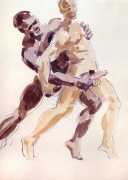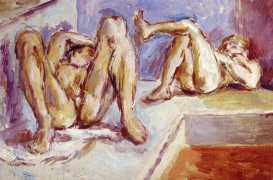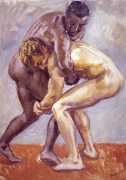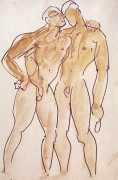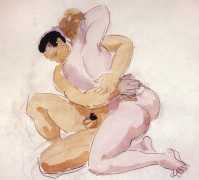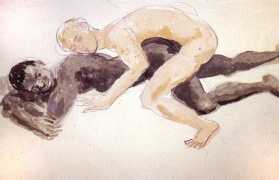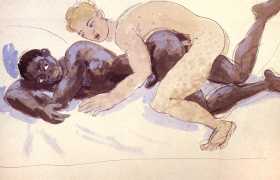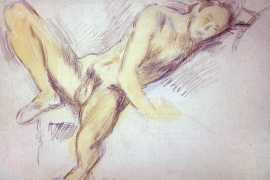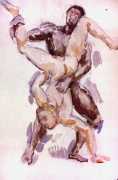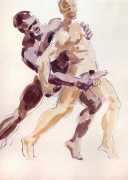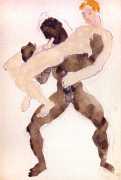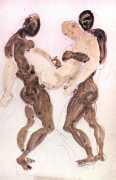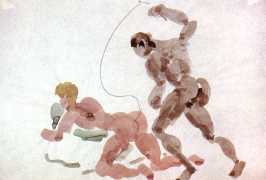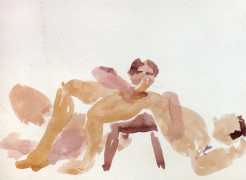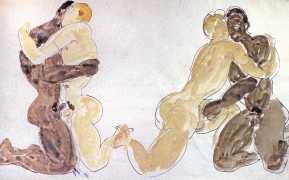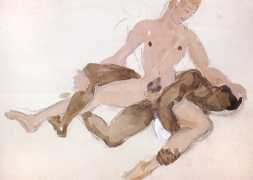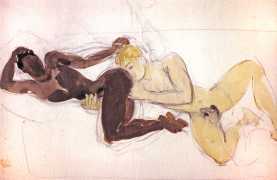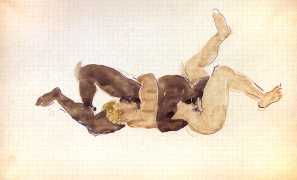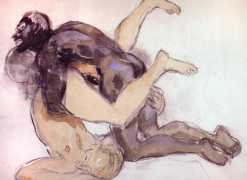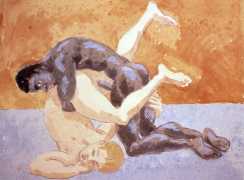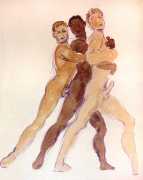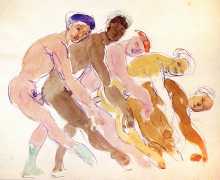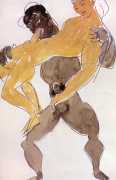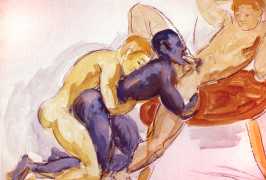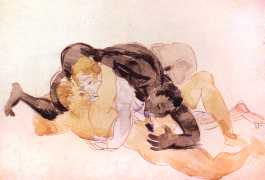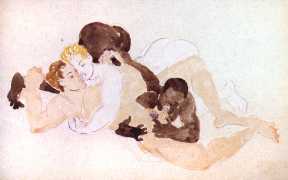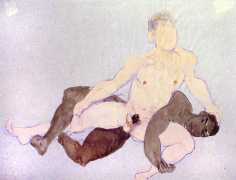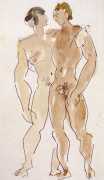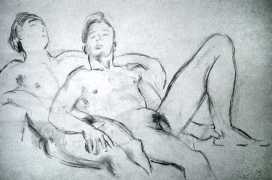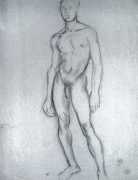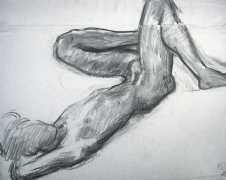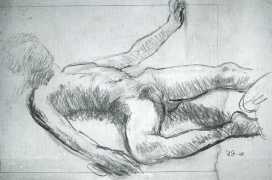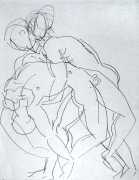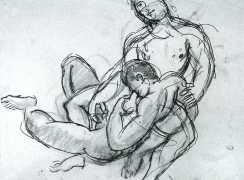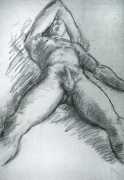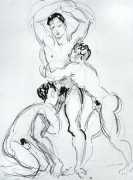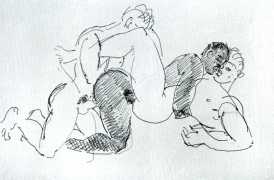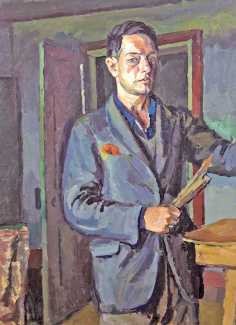 The British artist Duncan James Corrowr Grant was born at Rothiemurchus in the Scottish Highlands, the son of Major Bartle Grant and Ethel McNeill. His childhood was spent in India, returning to Britain in 1893. Although his family intended him to have an army career, he took up painting at the encouragement of the French painter Simon Bussy, entering the Westminster School of Art in 1902. He spent a year in Italy, where he copied some of the works of the Florentine Renaissance painter Masaccio, and attended Jacques-Emile Blanche’s school in Paris, La Palette, in 1906–7, before returning to London to spend a term at the Slade School of Art. He subsequently set up his own studio in Fitzroy Square. Through Bussy he met Matisse in 1909; he also visited Greece in 1910 and frequently visited Paris where he spent time with Picasso.
The British artist Duncan James Corrowr Grant was born at Rothiemurchus in the Scottish Highlands, the son of Major Bartle Grant and Ethel McNeill. His childhood was spent in India, returning to Britain in 1893. Although his family intended him to have an army career, he took up painting at the encouragement of the French painter Simon Bussy, entering the Westminster School of Art in 1902. He spent a year in Italy, where he copied some of the works of the Florentine Renaissance painter Masaccio, and attended Jacques-Emile Blanche’s school in Paris, La Palette, in 1906–7, before returning to London to spend a term at the Slade School of Art. He subsequently set up his own studio in Fitzroy Square. Through Bussy he met Matisse in 1909; he also visited Greece in 1910 and frequently visited Paris where he spent time with Picasso.
He was a central figure in the circle of artist and writers known as the Bloomsbury Group, which included Grant’s cousin Lytton Strachey, Maynard Keynes, Roger Fry, Virginia and Leonard Woolf, Virginia’s sister the painter Vanessa Bell, and Vanessa’s husband, the critic Clive Bell. Grant and Vanessa Bell were closely associated in their professional and personal lives for more than fifty years. In 1913 Roger Fry founded the Omega Workshops, of which Grant and Vanessa Bell were directors. The workshops produced furniture, pottery and textiles designed by various young artists including Grant and Bell themselves. In 1916 Grant and Bell moved to Charleston near Firle in Sussex, where together they decorated several houses.
Grant exhibited at the New English Arts Club from 1909 and the Friday Club, founded by Vanessa Bell, from 1910. He became a member of the Camden Town Group in 1911. In 1913 he exhibited with the Grafton Group, whose members included Fry, Bell and Wyndham Lewis. Influenced by the works of the Fauves and Cézanne in the first Post-Impressionist Exhibition of 1910–11, Grant contributed to its successor in 1912. In 1914 he participated in the Twentieth-Century Art show at the Whitechapel Gallery, and became a member of the London Group in 1919. His first solo show was held at the Carfax Gallery in 1920.

His early affairs were exclusively homosexual, his lovers including Lytton Strachey, the future politician Arthur Hobhouse, and the economist John Maynard Keynes, who at one time considered Grant the love of his life because of his good looks and the originality of his mind. Through Strachey, Grant became involved in the Bloomsbury Group, where he made many great friends including Vanessa Bell. He would eventually live with Vanessa who, though she was a married woman, fell deeply in love with him, and one night succeeded in seducing him; she very much wanted a child by Grant, and became pregnant in the spring of 1918. Although it is generally assumed that Grant’s sexual relations with Bell ended in the months before Angelica was born at Christmastime, they continued to live together for more than forty years. During that time their relationship was domestic and creative; they often painted in the same studio together, praising and critiquing each other's work.
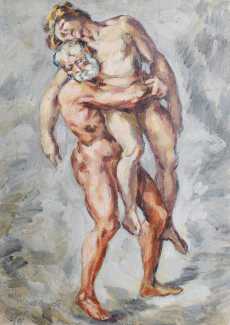
Living with Vanessa Bell was no impediment to Grant’s relationships with men, either before or after Angelica was born. Angelica grew up believing that Vanessa’s husband Clive Bell was her biological father; she bore his surname and his behaviour toward her never indicated otherwise. Duncan Grant and Vanessa Bell had formed an open relationship, although she herself apparently never had any further affairs. Duncan, though, had many affairs and several serious relationships with other men, most notably David Garnett, who would one day marry Angelica and have four daughters with her, including Amaryllis Garnett. Grant’s love and respect for Vanessa kept them together until her death in 1961.

